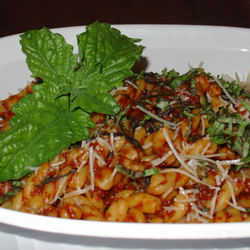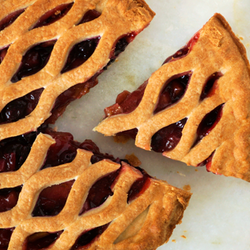I put up as many tomatoes as I can grow every year, so I was excited when I found an old recipe to make sun-dried tomatoes that would help make them even more versatile to store and use. I collect old recipes and cookbooks because not only am I fascinated with the old ways, but I also want to experience the true flavor of how foods are actually supposed to taste, unlike the mass-produced and packaged goods we consume today.
I have unexpectedly learned a little more about history, science, and sociology that I had not anticipated. Our ancestors worked very hard to preserve their harvests without the aide of refrigerators, freezers, canners, or chemicals. Drying, curing, and fermenting were a few of the only food preservation choices, and most involved recipes and/or methods passed down through generations.
The Method
Our forefathers and mothers seasoned tomatoes with salt, pepper, herbs, and spices before setting them out in the sun to dry, which took days, sometimes a couple weeks. The seasonings helped prevent loss of the produce from bacteria, insects, and maybe a few larger critters. Once dried, the seasonings were even more concentrated, and the moisture was at a minimum to delay potential decay before the produce was eaten.
| Many of the culinary herbs and spices we use are antibacterial, antimicrobial, and anti-fungal. See ". . . What's For Dinner?" for additional information. |
Sometimes dried foods were partially hydrated by dipping into homemade vinegars, which added another layer of protection from decay, as well as more flavor.
Olive oil was used as one more barrier against bug infestation and various forms of deterioration. The dried and seasoned fruit was packed into watertight containers with enough olive oil to cover the contents before sealing with the lids. The processed tomatoes would be stored in a cool dark cellar, lasting until the next harvest, and hopefully years beyond. A single jar of sun-dried tomatoes can be repeatedly taken from as long as the remaining tomatoes stay below the oils surface, and the level of oil replenished as needed. The olive oil is infused with the flavors of the tomatoes and seasonings and is a very popular dressing, and used to flavor breads.
I have put up many jars of sun-dried tomatoes over the last few years, following the basic methods discussed, without a single problem or complaint. My supply is used up before the next harvest rolls around, so I do not know just how long the jars can be stored in this manner, but many of the old recipes claim storage for multiple years. This particular method, or recipe, of sun-dried tomato is also referred to as "semi-soft" or "semi-sun-dried" tomatoes.
The RecipeThe recipe I have used as a guide to make my own sunless-dried tomatoes was found in Preserving Food without Freezing or Canning (see preview on Google Books Library) by the gardeners and farmers of Terre Vivante. Although the book is not old, originally published in Paris in 1992, it contains recipes that are cultural practice, or were handed down through family generations. |
|||||||||||||||||||||||||||||||||||||||||||||||||
 |
Which Tomato?
Just about any fresh organic tomato without blemishes will work for drying, although the paste tomatoes are traditionally used, having more meat and less seeds than the round slicers. Do you like them with or without seeds? Personally, I think the fluid around the seed adds some flavor, so now I leave them alone. It does not take long to remove the seeds once you get the hang of removing them (scope with your thumb), so this could be another option for some folks. Low acid tomatoes can turn black when dried, but are still safe to eat, just not very appetizing. |
||||||||||||||||||||||||||||||||||||||||||||||||
|
Tomatoes contain between 85-94% water! |
|||||||||||||||||||||||||||||||||||||||||||||||||
 |
Slice & Dry
I slice the round tomatoes about 1/2" thick vertically from top to bottom because the slices seem to be meatier and hold together better. I cut the cherry, grape, and paste tomatoes in half lengthwise and try to flatten them out a little so they will not take as long to dry. I do not add seasoning to my tomatoes while drying primarily because some of it falls off in the drying process, and more is lost with future processes. It also allows me to experiment with different herb flavors for specific jars of sun-dried tomatoes. I may powder (or flake) any leftover slices, too, so I do not want the seasoning or salt. I set my dehydrator at 135-140 degrees F, then check every few hours to remove any dried slices and turn the rest. I place the dried tomatoes in storage bags in the refrigerator until time to jar them. |
||||||||||||||||||||||||||||||||||||||||||||||||
 |
Dunk & Drain
Soak the dried tomato slices in a bowl of warm apple cider vinegar (a microwave comes in handy for heating the vinegar) for just a few minutes. Tomatoes should be partially hydrated and pliable. Drain the excess vinegar from the slices on paper towels or cotton cloth. (Secret Seasoning) Layer drained tomatoes in small jars, alternating with dried herbs and spices. If tomatoes were already dried with salt and seasoning, you can quickly end up with overly seasoned slices. Just a little seasoning goes a long way. |
||||||||||||||||||||||||||||||||||||||||||||||||
|
Components used for sun-dried tomatoes. |
The recipes I have consulted for making sun-dried tomatoes all call for garlic (fresh or powdered), salt (sea salt preferred), ground black pepper and/or hot red pepper, and various herbs such as: basil, oregano, thyme, marjoram, and many different varieties of mint.
I combine enough seasoning mix to sprinkle between the layers of dried tomatoes to last until I am finished with all the jars, so I don't have to stop to mix more, plus each mix is just a tad different from the last. I primarily use the following, but can vary with what I have on hand: * 2 tablespoons dried basil |
||||||||||||||||||||||||||||||||||||||||||||||||
|
Once a jar is stacked nearly full of tomatoes, pour a bit of olive oil over the slices and use a fork to firmly push them down under the olive oil and squeeze out the air bubbles. Repeat the layering process until the tomato slices reach where the jar threads begin (if you are using standard canning jars), or about 3/4-inch from the jar rim. Add olive oil until the jar is filled within 1/4 to 1/2 inch from top, with the last tomato slice 3/8 to 1/2 inch under the oil surface. Depending on how hard you pushed down on the tomato slices, after a few hours they may expand/rise up just a little. So be sure to check them later and top off the jars with more olive oil if needed. The slices must be stored under the oil surface to keep air and contaminates away from your sunless-dried tomatoes. |
|||||||||||||||||||||||||||||||||||||||||||||||||
|
Nutrition Sun-dried tomatoes are considered a healthy snack and a flavorful addition to many popular dishes. For additional information refer to the USDA National Nutrient Database, or for more in-depth nutritional analysis consult NutritionData.com. The following sites have many delicious recipes using sun-dried tomatoes, or search your favorite cooking web sites for recipes.
The imported brands of sun-dried tomatoes can be very expensive and high in sodium, too! You can save a great deal of money if you make your own and significantly reduce, or omit, the amount of salt used for them! It is also rewarding to experiment with different herbs, spices, vinegars (like a little balsamic or rice wine vinegars), and other dried fruits or vegetables (peppers, onions, etc.) along with your tomatoes. I hope you have fun making and experimenting with your own sunless-dried tomatoes, and please feel free to post your own recipes for making or using sun-dried tomatoes! |
||||||||||||||||||||||||||||||||||||||||||||||||


















